waste
Waste—Byproduct of All Life
Waste has the potential to give new life to refuse, even as we see it as a problem to be solved. Every human being and every human activity generates waste, from sewage sludge to debris from construction and more. At present, we generate more trash than we know what to do with in a sustainable way. Some, but not all waste can be recycled, giving new life to garbage and turning it into an energy-producing resource. Of the 6.3 billion metric tons of plastic waste ever produced, however, only 9 percent has been recycled, a sign that we could do more. The history of waste demonstrates that waste has been a problem since 3,000 BCE, when the people of Knossos, Crete, dug the first deep holes for refuse which they then covered with dirt, the precursors of today’s landfills.
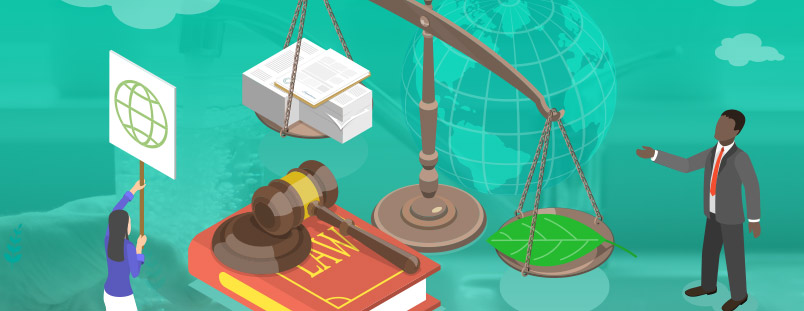
Clean Air Legislation
SThe Resource Conservation and Recovery Act (RCRA) was created to deal with the growing problem of solid and hazardous waste within the United States. Signed into law in 1976, the RCRA served as an amendment to the 1965 Solid Waste Disposal Act, the first statute designed to improve solid waste disposal methods. Since that time, Congress has worked to better our methods of handling waste, such as with the 1984 passage of the Hazardous and Solid Waste Amendments (HSWA). The federal government has made serious efforts at eliminating landfills and finding ways to reduce waste sources through waste minimization methods, such as green recycling.
Government legislation expresses the growing understanding that the way we treat, store, and dispose of human-produced waste is critical to preserving the planet for the sake of future generations. We recognize that reducing waste can lessen the damage to our environment while saving on energy and the raw materials that go into producing those items. Recycling waste, we now realize, can have these same benefits, eliminating the extra energy, materials, and costs of producing items new from scratch instead of from recycled trash.
The laws we have made acknowledge that waste disposal methods have the potential to create air and water pollution, and can damage the ecosystems that support human, plant, and animal life. Waste decomposition as it occurs in landfills, for example, is a smelly process that generates leachate and explosive methane gas, contributing to air pollution and the greenhouse effect. Waste incineration, such as the burning of plastic waste, produces toxic substances like dioxin. Gases created by burning waste, meanwhile, both pollute the air and contribute to acid rain, while ash from burnt waste can contain toxins such as heavy metals.
Waste sources are many and include municipal solid waste or garbage, hazardous waste, industrial non-hazardous waste, agricultural and animal waste, medical waste, radioactive waste, debris from construction and demolition, extraction and mining waste, oil and gas production waste, fossil fuel combustion waste, and sewage sludge. Our laws deal only with solid and hazardous wastes, with other forms of waste subject to exclusion under the RCRA. Solid waste is comprised of garbage, refuse, and abandoned materials. Hazardous waste is solid waste that can cause harm to humans or the environment.
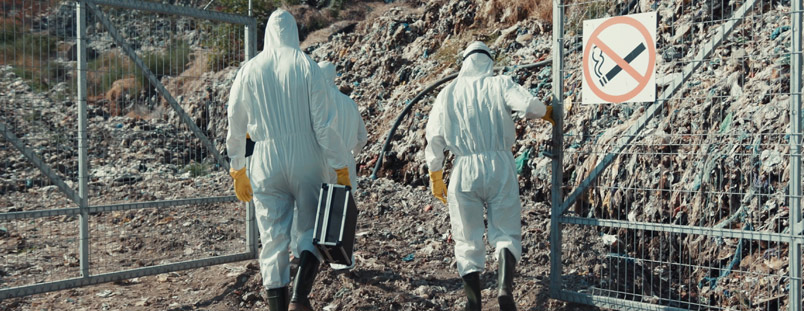
Waste and Human Health
The Agency for Toxic Substances and Disease Registry (ATSDR) was created in 1986 to examine and respond to potential health problems associated with the over 33,000 hazardous-waste sites within the United States. The mandate of the ATSDR, as legislated by the federal government, led to the creation of a list of seven priority health conditions (PHCs) associated with hazardous waste. PHCs include birth defects and reproductive disorders, various cancers, immune disorders, kidney failure, liver failure, lung and respiratory diseases, and disorders associated with neurotoxins. A total of 275 hazardous substances were identified as responsible for causing these health conditions.
Improper waste disposal can contaminate water, soil, and air, leading to adverse health outcomes. Unsafe methods of waste treatment such as open incineration, may cause direct harm to the health of waste treatment workers and those who live in close proximity to waste treatment sites. Children are at an increased risk for illness from hazardous waste and improper waste treatment methods. Medical waste, improperly disposed of, can lead to parasitic, lung, and skin infections. Other diseases associated with medical waste include bacteremia (an infection of the bloodstream), meningitis, and candida, along with HIV and hepatitis A and B viruses.
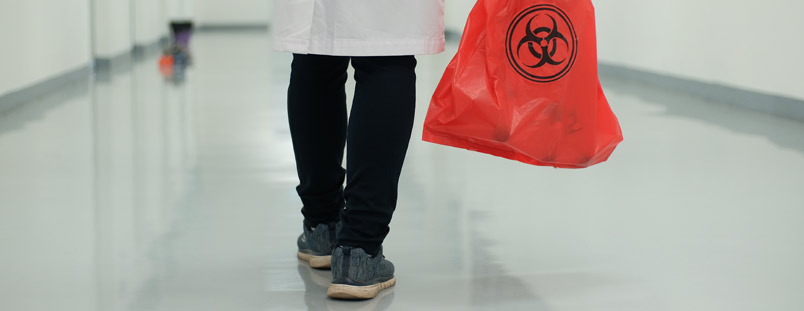
Waste and Plant and Animal Life
Waste can affect plant cells. Damage to plant cells from waste continues on into future plant generations, as environmental contaminants are passed along. Plant cells impregnated with toxins from waste can produce promutagens that are known to lead to mutations. At the same time, composted animal and plant waste help to improve plant growth and the production of fruit and other crops.
Animals, birds, and sea creatures can be harmed when they swallow plastics and chemicals. Ingesting debris such as from cigarette butts and discarded fish hooks can be deadly to animals, fish, and birds. These living creatures don’t have to eat waste to become sick. Many of them get caught and die, for instance, in abandoned fishing nets. Turtles and birds may choke when their necks become trapped in the plastic rings that hold together a six-pack of beer, when they mistake this recreational waste for food.
Plastic fragments have been found in hundreds of species, for instance in 86 percent of all sea turtles, 44 percent of seabirds, and 43 percent of marine mammals. Plastic is often fatal to animals. Animals that ingest plastic waste may starve as they fill up with plastic they cannot digest. Plastic waste can also cause blockages in the digestive tracts of animals. Toxic chemicals, too, pose a danger to animal life, and to human health as well, as these hazardous substances make their way on up through the food chain.

Waste and Outdoor Recreation
Recreational outdoor activities, so important for our mental health, are also threatened by waste. Each year, 3.5 million Americans become sick from swimming in coastal waters tainted by sewage. Swimming in sewage-polluted waters can cause a multitude of health issues including pinkeye, skin rashes, respiratory infections, and hepatitis.
Our lakes, rivers, and beaches, some of our favorite spots for leisure, may become dead zones as a result of harmful plant and algae growth from waste. This waste-induced vegetation lowers the oxygen levels of our waters until they can no longer support our wildlife and fish. Some algae produce neurotoxins that can harm wildlife, including whales and sea turtles.
Waste is also ugly when visible to the naked eye, making a day at the beach or a national park less than appealing. Litter has a known impact on mental health, increasing the risk for and worsening existing anxiety and depression. Food litter attracts rats and other rodents that carry disease. Parks strewn with garbage attract fewer leisure-seeking visitors, and as these green spaces continue to deteriorate, may become a locus for crime and antisocial behavior.
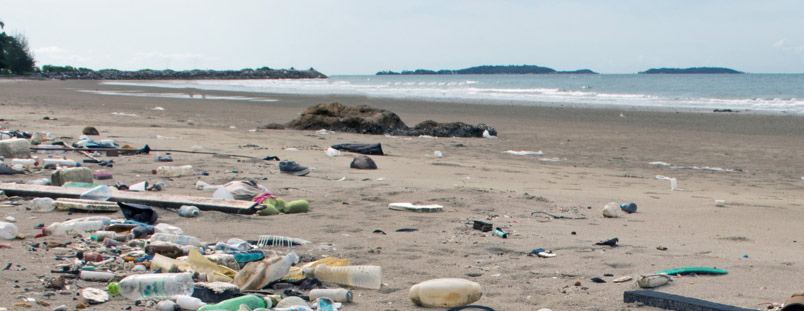
Waste and Transportation
Cars on average produce some 4.6 metric tons of carbon dioxide each year. A gallon of gasoline, in fact, produces 20 pounds of carbon dioxide. Electric vehicles, meanwhile, may not produce carbon dioxide, but they need large batteries that also create a large waste footprint.
Exhaust from cars contains a variety of toxic gases. Aside from carbon dioxide, a greenhouse gas known to be a major factor in climate change, exhaust from tailpipes also contains carbon monoxide, nitrogen oxides, sulfur dioxide, hydrocarbons, benzene, and particulates. Breathing these pollutants are known to be harmful to human health. Among many other types of hazardous waste, the RCRA regulates spent antifreeze, due to the fact that it may contain harmful chemicals such as ethylene glycol and lead.
The vehicle manufacturing process also produces environmental waste. The more common waste from the manufacture of cars comes from machine lubricants and coolants, aqueous and solvent cleaning systems, paint, scrap metals, and plastics. Electric vehicles are seen as part of the solution to the hazardous waste produced by automobiles. EVs emit 64 percent less CO2, compared to gas-powered cars. The batteries used to run electric vehicles can also be recycled, unlike the fuel that is burned by cars that run on fossil fuel.
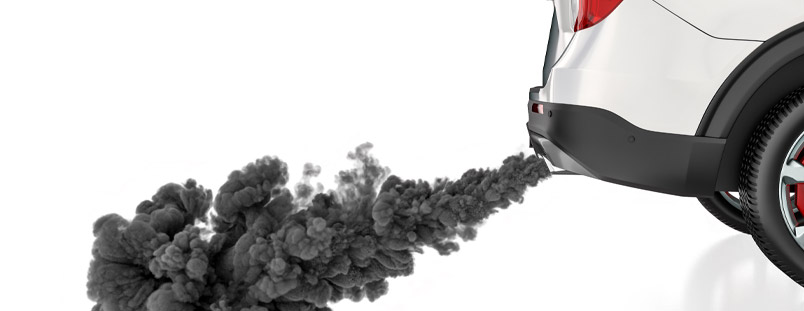
Waste and the Economy
Reduce, reuse, and recycle are the basics of dealing with waste in ways that can have a positive impact on the economy. The EPA estimates that 42 percent of greenhouse gas emissions are the result of producing and using goods like food, other products, and packaging. Reducing our use of these items by reusing and recycling them, conserves energy and reduces carbon emissions.
The economy, as it stands, is linear. We take raw materials from the Earth, make things from them, and then finally, throw them away, creating waste. A circular economy, in contrast, prevents waste production. Eliminating waste and pollution through better design and avoiding single use products reduces waste. Recycling and reusing items extends the usefulness of products, further reducing waste. The circular economy uses less energy and materials, to keep spending at a minimum.
In terms of the food industry, a circular economy means improving the soil, our ecosystems, and climate by avoiding the use of pesticides and other chemicals. Healthy soil has better water retention properties that can protect plants and crops from drought. Soil in good health is also better at absorbing water, reducing the risk for flooding. It is estimated that the economic, health, and environmental rewards from adopting a circular economy in the food industry alone, would reach 2.7 trillion dollars per year and halve greenhouse gas emissions by 2050.
what you can do
Waste is a manmade problem that affects everyone, all over our world today. There is much we can do to reduce the amount of waste we produce. Here are three ways you can help to eliminate unnecessary, harmful waste:
- Teach the Three R’s to Children—look for ways to instill the concepts of reduce, reuse, and recycle in your children. Did your child finish a tub of pudding? Wash it and have them use it to plant seeds or store craft items. This sets a good example for your child of how to reduce waste through reusing an item and giving it new life.
- Recycle Your Coffee Grounds—the usefulness of that cup of java extends beyond that morning hit of caffeine when you make creative use of coffee grounds. Coffee grounds are great for enriching and aerating a compost pile. Sprinkled directly on rose bushes and other acid-loving plants gives them a nitrogen boost while keeping away ants, slugs, and snails.
- Cut Back on Gas Use—gasoline is a major source of hazardous waste in the form of carbon dioxide and other greenhouse emissions. You can reduce your use of gasoline through intentional driving. Driving intentionally, for example refraining from slamming on the accelerator or weaving through traffic, uses less gas, reducing the production of waste from burning fuel.

